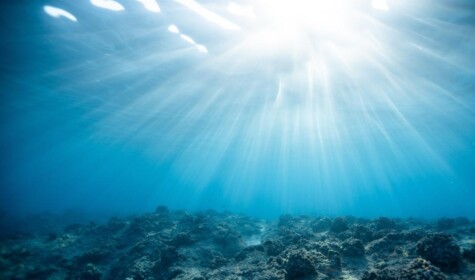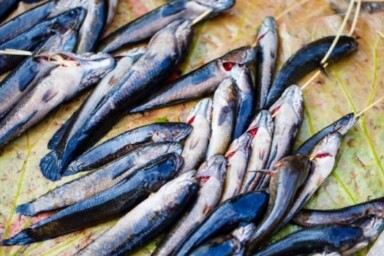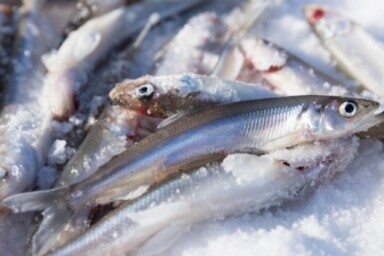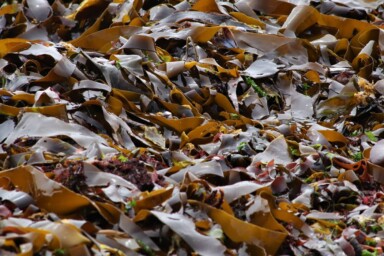With climate change becoming visibly evident, we are seeing its impact around the world, not just on land, but also in the ocean. Water temperatures in the sea are rising rapidly and this warming is having a direct impact on the marine ecosystem and the people who rely on it. Around half the world’s population relies on fish as a major source of protein and the fishing industry employs over 56 million people across the globe.
Studies are consistently showing that the increased water temperatures are seriously affecting the fish population, and while some populations will actually benefit from this, most will suffer tremendously.
How do increasing water temperatures affect fish and fisheries?
The increase in water temperatures and how it affects fish and, consequently, fisheries is a big question. The study referenced above found that warming sea temperatures reduce the potential of catching anything by 4% due to a reduction in temperature tolerance. This has remained constant for the last 80 years. Unfortunately, these numbers can increase as you move to areas where commercial fishing is widespread. In the North Sea, for example, losses in catch from warming waters is closer to 30%.
Why is it though, that warming temperatures make it harder to catch fish? The first answer is temperature tolerances. Fish have very low tolerances when it comes to what temperature they can endure and where they feel comfortable in terms of locale. Once the water temperatures rise beyond that tolerance, they must move into deeper water or shift north or south to waters which are colder. Their evolution tells them that the water must be just right, or their bodies will begin to fail because they can’t survive outside their ideal water temperatures. So, they migrate elsewhere which makes the process of catching fish much less predictable for commercial fishermen.
If we pull back a bit and look at this issue from a larger scale, certain species of fish are able to survive in certain waters around the world, while others are not. Fish, in their appropriate locales, prey on the appropriate organisms and remain safe from predators that may prey on them. But, when their tolerances are tested and fish are forced to migrate into unfamiliar waters, that’s where the trouble begins. In those waters, there could be fish that have a wider tolerance to the temperature and now the bioavailability of the fish changes completely because the predator has now become the prey.
Consequently, commercial fisheries respond by traveling to locations they normally wouldn’t fish in and chase fish they normally wouldn’t aim to catch. All of this results from the fact that warming water temperatures force fish into places they wouldn’t normally go. This leaves the commercial fishing industry constantly changing and adjusting to migration patterns that are completely unpredictable due to the lack of data regarding migration patterns.
The biggest issues caused by warming sea temperatures
We’ve talked about temperature tolerances and bioavailability, but let’s break it down a little more. What specific issues do these cause and how does it impact fisheries and the commercial fishing industry?
Reduced Fish Stock
For a fishery to be sustainable it needs to have a healthy supply of fish to catch now and the steady reproduction of fish to catch later. It’s a never-ending circle that is entirely necessary to sustain our consumption of fish. The problem is, more people are eating fish now than ever before, and this creates a higher demand. And, as we know, when the demand goes up, supply goes down. When you stack that on top of changing migration patterns, warming temperatures and decreased bioavailability, you have a recipe for disaster. There are more ships out there fishing for less fish. So, what happens?
You end up with depleted stock because the fish are unable to keep up with the demand. That’s why farmed fish is so popular these days because we’re told it’s our ‘best option’ and it’s the ‘most sustainable’ even though it’s a hazard to the health of humans and fish. Farmed fish is some of the lowest quality product produced anywhere and yet, we’re consuming more of it than ever.
Impact on key prey species
Everything in the water is based on weather and temperature. This is how marine animals identify when it’s time to do certain things like mate and lay eggs. If the water is warming earlier in the year, prey species like zooplankton could bloom early which means they won’t be present when juvenile fish need them to feed on. Not to mention the fact that these key prey species may not even be in the right location due to the increase in temperature. Some fish may migrate entirely away from their prey species which could force them to travel further to find food or suffer the consequences.
We have to realise that the impact doesn’t always lead to the demise of fish, but it leads to a lower quality of life for them. When they have to struggle more to find food and feel comfortable in the water, it can impact their bioavailability as well. They may feel more sluggish and not come out in the open water as much. This could reduce catch and reproduction rates again furthering the issue of bioavailability.
Algae blooms and ‘The Blob’
In 2016, the North American Pacific Coast became covered in toxic algae containing deadly levels of chemicals, closing down fisheries from the southern-most tip of California up to Alaska. It was called ‘the blob’ and it was a giant algae bloom caused by unusually warm temperatures in the Pacific Ocean. These blooms are becoming more common and they’re responsible for the death of millions of fish. The blob was believed to extend for hundreds of miles and down as much as 300 feet deep.
These algae blooms are a problem for multiple reasons. First, the algae damages fish gills because it reduces the oxygen in the water and makes it harder for the fish to take in enough water. Algae also threatens us because we can consume shellfish like mussels and clams that filter-feed. Even if there isn’t any algae present, these shellfish can still contain the toxic chemicals.
How fisheries are combating rising temperatures
The ultimate question is, what do we do? How do we manage these problems and do so in a sustainable way?
Unfortunately, many fisheries are already feeling the pinch. Many regions have seen dramatic drops in fish populations due to overfishing and climate change. A third of the ocean’s fish stocks are nearly depleted and as the bioavailability of fish continues to decrease, it’s only going to get worse.
Protecting natural carbon storage is one way that experts believe we can help slow down the increase in temperature. Carbon is stored in trees and soil so by increasing the amount of mangroves, sea grass and salt marshes, it will reduce emissions and help revitalise the ocean. We also need to end bottom trawling on the sea floor which not only destroys the seabed but also releases as much carbon as the entirety of the air travel industry.
Improved regulation is another way. We need to keep close tabs on illegal fishing and especially on the countries most responsible for it. Countries throughout Asia as well as the United States are known for loose policies and minimal enforcement. To restore a dwindling fish population, we need to give fish every chance they have to catch up.
Lastly, everything we put in the water has a direct impact on its quality from something as small as what we wear when we swim to the fossil fuel emissions from fishing boats. We need to engage in sustainable management of our fishing procedures as well as our consumption of seafood. Less waste, less bycatch and better practices will lead to a better future for our fish and our seas.







